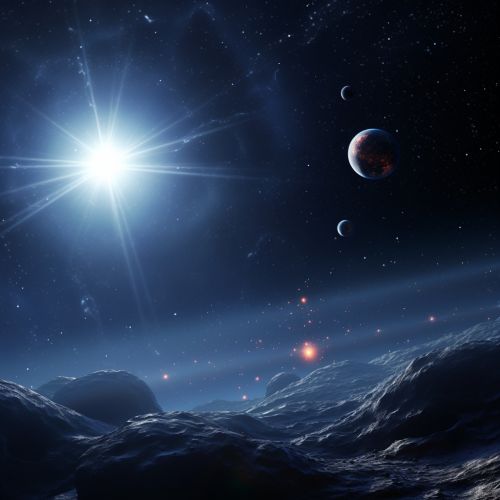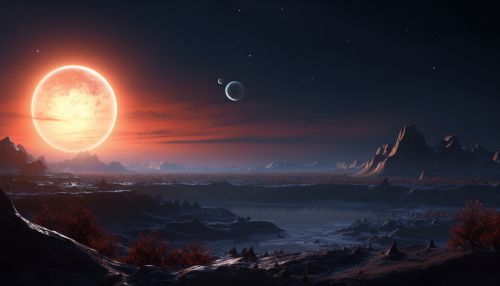Habitable Zone
Introduction
The habitable zone, also known as the "Goldilocks zone", is the region around a star where conditions may be just right – not too hot, not too cold – for life as we know it to exist. This concept is central to many fields of astronomy, including planetary science, astrobiology, and the search for extraterrestrial life.


Definition
The habitable zone is defined by the range of orbits around a star within which a planetary surface can support liquid water, given sufficient atmospheric pressure. The boundaries of the habitable zone are determined by the star's luminosity and output of stellar radiation. The inner edge of the habitable zone is where a planet would experience a runaway greenhouse effect, causing its oceans to boil away. The outer edge, on the other hand, is where a planet would experience a maximum greenhouse effect, beyond which it would freeze.
Determining Factors
Several factors determine the location and width of a star's habitable zone. These include the star's luminosity, its spectral type, and its age.
Star's Luminosity
A star's luminosity, or its total energy output, is a primary factor in determining the extent of its habitable zone. More luminous stars have wider habitable zones, while less luminous stars have narrower ones.
Star's Spectral Type
The spectral type of a star, which is a classification based on its temperature and spectral characteristics, also affects the location of its habitable zone. For example, cooler, redder stars (M-type or red dwarf stars) have habitable zones that are closer to the star, while hotter, bluer stars (O-type or blue giant stars) have habitable zones that are farther away.
Star's Age
A star's age is another important factor. As stars age, they increase in luminosity. This means that the habitable zone moves outward over time, a phenomenon known as the "habitable zone migration."
Habitable Zone and Planetary Habitability
The existence of a habitable zone does not guarantee that a planet within that zone will be habitable. Planetary habitability is a complex property that depends not only on a planet's distance from its star but also on a wide range of environmental conditions and geophysical processes, such as the planet's atmosphere, its rotation and orbital dynamics, and the presence of a magnetosphere to protect it from stellar radiation.
Habitable Zones in the Solar System and Beyond
In our own solar system, the Earth is comfortably situated within the Sun's habitable zone. However, the concept of the habitable zone has also been applied to other stars and their planetary systems in the search for exoplanets – planets outside our solar system – that might have the potential for life.
